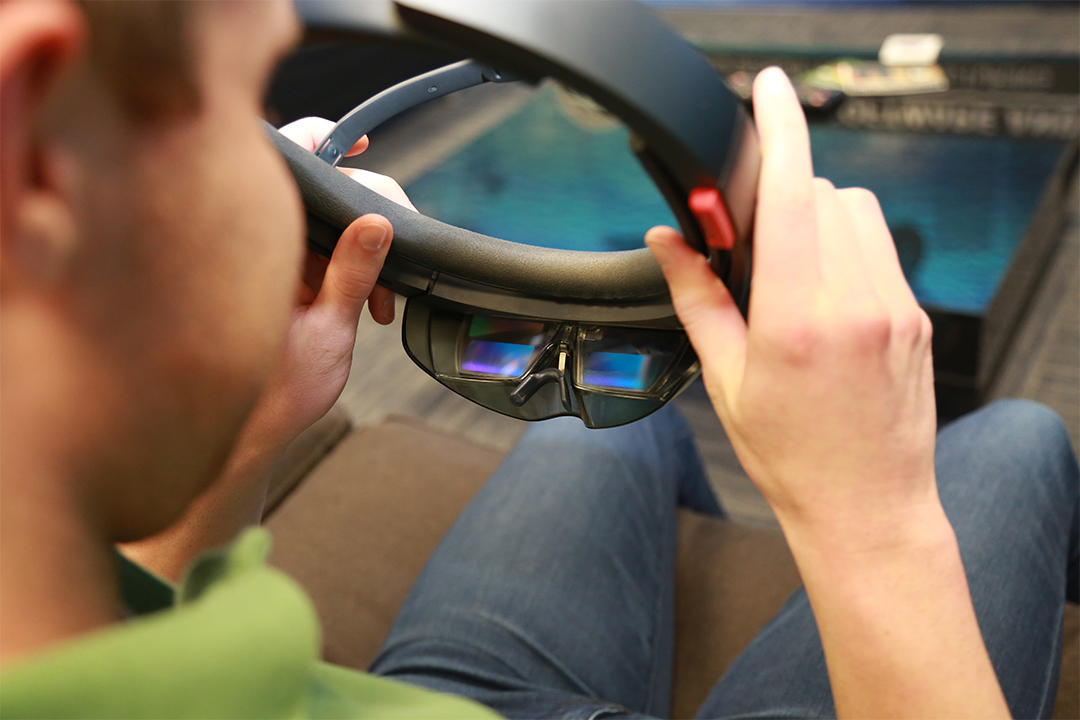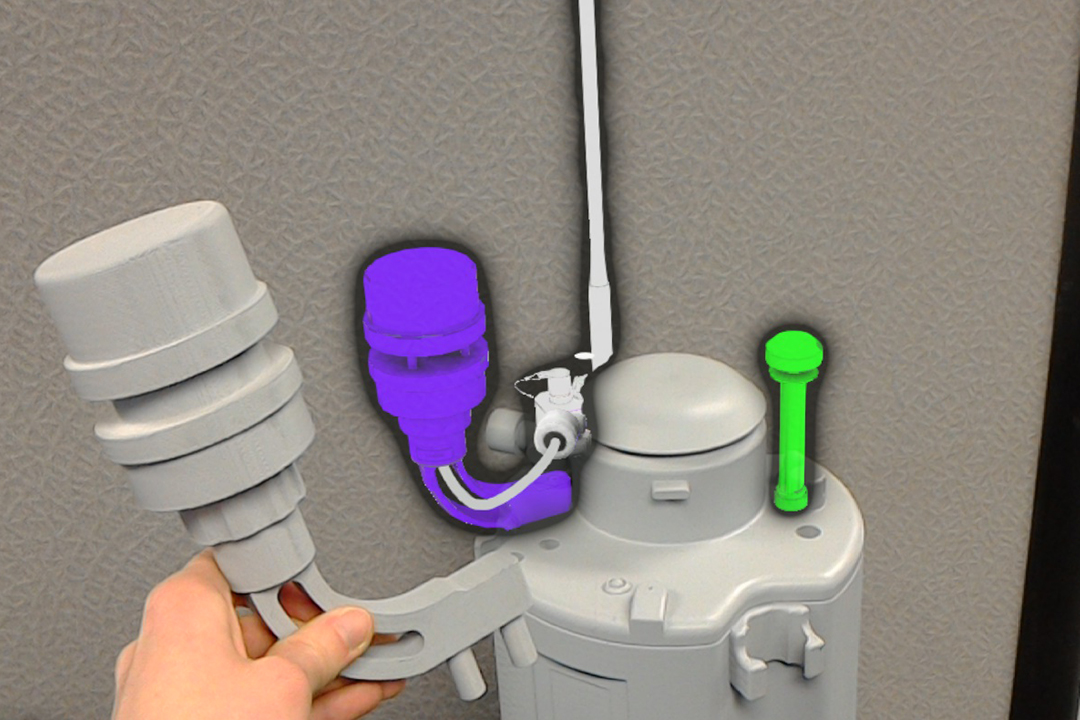// NEWS RELEASE
Synthetic environments are the future of Army training
CCDC Chemical Biological Center Public Affairs | January 14th, 2019
Synthetic environments are the future of Army training
DEVCOM CBC Public AffairsJanuary 14th, 2019

The Microsoft HoloLens is a lightweight augmented reality device used for training simulations for the U.S. Army.
VR and AR training environments allow Army researchers to offer more options in enabling warfighter readiness.
As challenges on the battlefield become increasingly complex, the use of virtual and augmented reality in warfighter training is rapidly increasing with the U.S. Army at the forefront.
Virtual reality (VR) is an immersive digital experience taking place within a simulated environment. VR environments can simulate 3D audiovisual aspects of real-world locations and events as well as imaginative, fantasy scenarios. The Army is currently focusing on VR’s real-world applications.
VR and augmented reality (AR) hardware is becoming more widely available to consumers, and more widely used with gaming and mobile technology due to the efforts of tech giants such as Microsoft, Facebook, Samsung, and Apple.
While AR offers amusement to consumers who catch Pokémon in Pokémon GO (which uses AR to simulate animated pets in the real world as viewed through the screen of a phone), VR and AR have much more to offer toward enabling warfighter readiness.
At the U.S. Army Research, Development and Engineering Command Edgewood Chemical Biological Center (RDECOM ECBC), a team of artists and computer scientists is developing innovative ways to aid the chemical biological defense community and the warfighter through VR and AR.
VR and AR are recognized as preferred technologies for the U.S. Army to develop more effective next-generation training tools and environments to align with the Army Modernization Strategy.
“Our team along with other organic groups within the Army are exploiting next generation tools and technology to advance synthetic training for the warfighter and chemical biological defense,” said Jeff Warwick, head of RDECOM ECBC’s Interactive Software and Visual Media branch.
Part of the Army Modernization strategy is Soldier Lethality, which spans all fundamentals – shooting, moving, communicating, protecting, sustaining and training. The Synthetic Training Environment (STE) is a major pillar of Soldier Lethality, and will provide the future of training for not only the chemical biological defense community but the entire U.S. military.
“Our VR/AR projects are designed to client requirements to address specific situations, missions or equipment. These are realistic, immersive environments, which means the training done with these types of systems very effective,” said Warwick.

One such client is the RDECOM ECBC’s Advanced CBRNE Training Team. They wanted to provide CBRNE units with realistic training that allowed Soldiers to learn without the risk of exposure to chemical biological threats. The solution was a VR training environment that made Soldiers feel like they were in a clandestine laboratory.
RDECOM ECBC multimedia specialist Don Lail speaks at universities and industry conferences about the practical application of AR and training Soldiers using VR and AR.
“VR training tools allow the trainee to learn and engage with training materials in a more interesting and immersive way, certainly more engaging than a typical classroom setting or training guide,” explained Lail.
RDECOM ECBC has already produced several VR/AR applications which provide new learning capabilities, including enabling a user to dissect a life-size model of an unmanned aerial vehicle in flight. Another application gives the user information through Mircosoft’s HoloLens AR head-mounted display which relates to a physical CB detector the user can manipulate. The application walks the user through a step-by-step assembly of the physical detector’s various removable components and also provides an overview of the detector’s operation and status.
“These AR training tools allow novice users to perform assembly, maintenance, repair, or review directly on a device as if they were a subject matter expert,” explained Lail.
Once the hardware becomes suitable for fielding, training applications such as these could be utilized by the warfighter any place and at any time, making them true point-of-need training. These current applications are just the tip of the virtual iceberg. It is not currently known the extent to which VR/AR can be employed toward assisting and enhancing the warfighter.
“We could design a training, load it onto any number AR glasses and ship them to wherever they are needed,” said Jason Gitlin, the branch’s lead artist, “Better yet, we can adapt a program to the unique needs of, for instance, a special forces team, load up the glasses with the program, and send a set to the team to help them diagnose and solve a specific problem with a mission-critical piece of equipment.”
Commercial VR/AR hardware has progressed rapidly in the past few years, becoming lighter, more comfortable, more user-friendly and most importantly, more affordable. These commercial off-the-shelf systems allow the Army to establish short and flexible development cycles which minimize costs and maximize development outcomes.
Across the Department of Defense, synthetic training tools are being employed to provide service members with the information and muscle memory necessary to enhance readiness.
“Through some of the training tools we’ve developed recently it’s clear Soldiers internalize the training and are better prepared heading into a mission,” Warwick said. “We’re excited to see what’s to come and the impact the tools we develop have on the warfighter.”
The U.S. Army Combat Capabilities Development Command (DEVCOM) leads in the discovery, development and delivery of technology-based capabilities to enable Soldiers to win our nation’s wars and come home safely. DEVCOM is a major subordinate command of the U.S. Army Futures Command. The DEVCOM Chemical Biological Center is the Army’s principal research and development center for chemical and biological defense technology, engineering and field operations. The DEVCOM Chemical Biological Center is headquartered at Aberdeen Proving Ground, Maryland.
